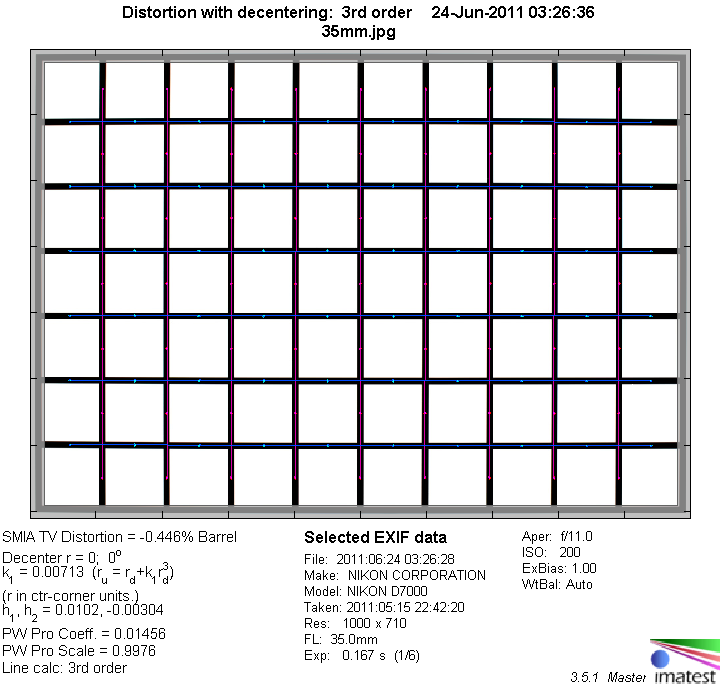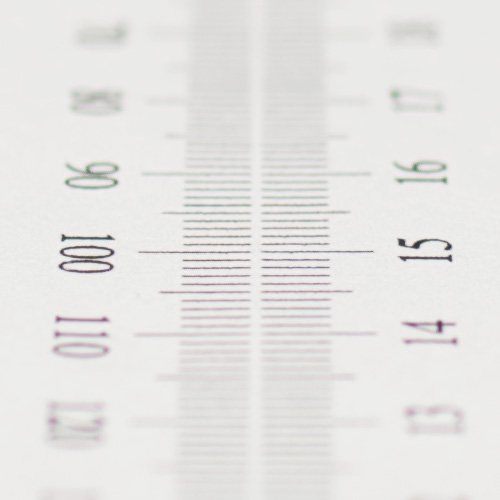|
Tokina AF 35mm f/2.8 AT-X Pro DX (Nikon) - Review / Test Report - Analysis |
|
Lens Reviews -
Nikon / Nikkor (APS-C)
|
|
Page 2 of 3

Distortion
The lens shows a low amount of barrel distortion at around 0.4%. For anything but really critical subjects (like reproduction work) this should not be an issue.

The chart above has a real-world size of about 120x80cm.
Vignetting
The lens shows moderate light fall-off towards the corners wide open, which can be reduced by stopping down. From f/5.6 onwards, vignetting is down to a negligible level.

MTF (resolution)
Macro lenses usually deliver very high resolution and the AT-X M35 is no exception in this regard. In the image center, sharpness is excellent straight from the largest aperture and remains on this level until diffraction effects reduce image quality from f/11 onwards.
The borders and corners follow slightly behind with very good resolution wide open down to f/8, where the borders even reach excellent resolution (but only just). Again, from f/11 onwards diffraction reduces sharpness. Note that this is a physical limitation, not an optical design issue of the lens.
Please note that the MTF results are not directly comparable across the different systems!
Below is a simplified summary of the formal findings. The chart shows line widths per picture height (LW/PH) which can be taken as a measure for sharpness.
If you want to know more about the MTF50 figures you may check out the corresponding Imatest Explanations

Chromatic Aberrations (CAs)
Chromatic aberrations (color shadows at harsh contrast transitions) are very low wide open, but increase to higher levels by stopping down. This is a somewhat disappointing behavior, especially for a macro lens, where close-up work usually requires a rather small aperture to increase depth of field. However, lateral CAs can easily be corrected in post processing and most newer Nikon DSLRs already do this on their own (as well as most of the current RAW converters).

Bokeh
The image blur in front of and behind the focal plane is quite smooth in general, but shows some traces of double contours and nervousness.
Background highlights show pronounced outlining. Thanks to rounded aperture blades, highlights retain a circular shape for most of the aperture range, except at the image borders, where they are cut off at one side at large apertures due to mechanical vignetting.

Bokeh Fringing
Bokeh fringing is a general problem of fast glass. As you can notice below the halos have different colors - magenta (red + blue) in front of the focus point and green beyond. Typical for most fast primes the Tokina shows a visible amount of bokeh fringing at large aperture settings. As usual, stopping down helps to reduce the amount of fringing significantly.
|
Move the mouse cursor over the f-stop marks below to observe the respective bokeh fringing
|
| f/2.8 |
f/4.0 |
f/5.6 |
f/8.0 |
|

|
|